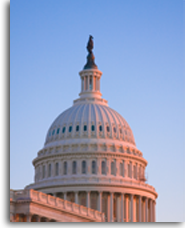At The New Republic’s Daily Blast Greg Sargent reports “Trump Hit by Brutal New Polls on Econ as GOP Tariff Panic Goes Nuclear,” and writes: “President Donald Trump is set to announce that he’ll impose sweeping new global tariffs on imports, and congressional Republicans are already scrambling wildly to try to shield their states and districts from the fallout. Meanwhile, a Fox News poll finds that Trump is sliding on the economy, with the public turning against tariffs in particular. And an Associated Press survey also has terrible news for Trump on this front. Notably, all these negative consequences kicked in well before the tariffs have even started. We talked to Jared Bernstein, former chair of President Biden’s Council of Economic Advisers and now a visiting scholar at Stanford, who has a new piece on his Substack predicting the consequences could be dire. He explains why the tariffs are so wrongheaded—and why they’re likely to cause major backlash against Trump and his party. Listen to this episode here. As Bernstein writes at substack.com, “Everyone knows that tariffs are a tax (on imports). I’ve seen scores between $1-2 trillion over ten, so they can potentially raise real revs, but, as I point out to Ms. Claman, they’re taxes on the wrong people. Low-cost imports are a larger part of the market basket of middle- and low-income households. Tariffs are a regressive tax…The serious research that caught my attention this weekend was a new forecast from the Goldman Sachs (GS) macro team, which I follow closely as they’ve been ahead of the crowd in accurately forecasting stronger growth and downplaying recession worries in ‘22-‘23. In advance of “Liberation Day,”—this Wednesday when the next tranche of tariffs will be announced—they’ve taken the real GDP growth forecast for Q1 down to 0.2%. They raised their forecast for core PCE inflation for this year by 0.5% to 3.5% and their unemployment rate forecast by 0.3% to 4.5% “at end-2025 to reflect weaker GDP growth and the effects of federal spending cuts and layoffs. We raised our 12-month recession probability from 20% to 35%, reflecting our lower growth forecast, falling confidence, and statements from White House officials indicating willingness to tolerate economic pain.”…Along with the rest of us, I’m a lot less sure the president is going to make the right choice. I fully expect him to make the wrong one and, like I said, those GS folks have a good track record. If they’re right, the only liberation we’ll get from Liberation Day will be the U.S. economy’s liberation from the ongoing economic expansion the Trump administration inherited, along with consumers’ liberation from paying lower prices on imports.”
In “Of Course Trump Will Tank the Economy. It’s What Republicans Do,” Michael Tomsk writes, also at The New Republic: “Where are we headed? A recent survey of corporate chief financial officers finds 60 percent of them agreeing that we’re headed for a recession this year. Is anyone surprised? This is what Republicans do. They screw up the economy. Later down the line, Democrats get elected and have to fix everything. Then the media characterizes the economic first responders as the tax-and-spend liberal wastrels—lather, rinse, repeat. This has been happening since 1990, and it’s happened three straight times. You’d think the American people might have noticed by now.” Tomasky shares a detailed history of economic meltdowns under Republican presidents, and adds, “The last three Republican presidents wrecked the economy. The last three Democratic presidents had to fix things. One statistic for you. Net jobs created under Clinton and Obama: 33.8 million. Net jobs created under Bush, Bush, and Trump: 1.9 million. That is not a typo…And with Elon Musk’s help, the next time we tot up job gains under recent GOP presidencies, we may look back on that paltry 1.9 million with nostalgia: “Remember when Republicans were merely steaming mediocrities, and not economic arsonists?”…Then there’s the Republican ideology, as being played out in the House and Senate budgets. It has been driving the country to the brink of financial ruin for 35 years. Why should that change?…the next Democratic president will be charged with cleaning up the fourth consecutive Republic economic calamity.”
Erkki Foster’s “CNN Data Guru Gives Damning Verdict on Musk’s Election Fail” provides these observations at The Daily Beast: “CNN data analyst Harry Enten has a warning for Republican candidates: Stay far, far away from First Buddy Elon Musk…“Elon Musk, simply put, is an unpopular guy. He is political poison,” Enten said on Wednesday’s edition of CNN News Central, arguing that the billionaire’s high-profile involvement in the Wisconsin Supreme Court race has backfired on the GOP….Enten highlighted polling that shows Musk’s favorability ratings are deep in the red, sitting at negative 12 points in Wisconsin and negative 17 points nationwide, according to Enten’s aggregate and a Marquette Law survey…Trump, apparently rattled by his senior adviser’s humiliating fail in Wisconsin, told his Cabinet that Musk will be stepping down from DOGE in the next few weeks, Politico reported Wednesday.” Of course, Republican candidates will continue to kiss up to Musk, if only to get some of the billionaire’s money. But don’t expect to see many photo-ops of GOP candidates with Musk.
“Two favorite Republican tactics failed, The Working Families Party explains at working families.org.”unrestricted money and fearmongering. Brad Schimel and his enablers couldn’t buy this election and they couldn’t scare Wisconsinites into voting against the things we care about – public safety, reproductive freedom, and affordable healthcare and housing,” said Corinne Rosen, State Director of the Wisconsin Working Families Party. “Wisconsin voters denied Musk’s money in what will be the first in many defeats as voters realize and exercise our people power.”…To meet this challenge, the Wisconsin Working Families Party executed one of its largest field programs ever leading up to the Spring 2025 general election. The Party had more than 25,605 1-on-1 conversations with voters via canvassing and phones on behalf of Judge Susan Crawford. And 703 volunteers sent 36,868 personal postcards to voters about the Supreme Court race. All told, the Party made 661,330 attempts, 44,841 contacts, and 15,408 voters identified for Judge Susan Crawford…“With millions of dollars spent attacking Susan Crawford as ‘soft on crime,’ the GOP turned Wisconsin’s Supreme Court race into a referendum on public safety,” said Insha Rahman, Director of Vera Action. “At the ballot box, Wisconsinites faced a clear choice between Brad Schimel’s tough-on-crime rhetoric or Susan Crawford’s solutions for safety, accountability, and justice. The results speak for themselves. Leading with real solutions, not scare tactics, on what works to prevent crime and break its cycle is both good policy and good politics—and a lesson for Democrats across the country to not stay silent or mimic the GOP’s stale tough-on-crime rhetoric.”…“The Working Families Party’s canvassing events for Susan Crawford were powerful and effective,” said John Drew, Chairperson, UAW Wisconsin State CAP Council. “WFP focused on working class neighborhoods in Milwaukee where its messaging led to meaningful conversations with voters and moved them to take action.”









